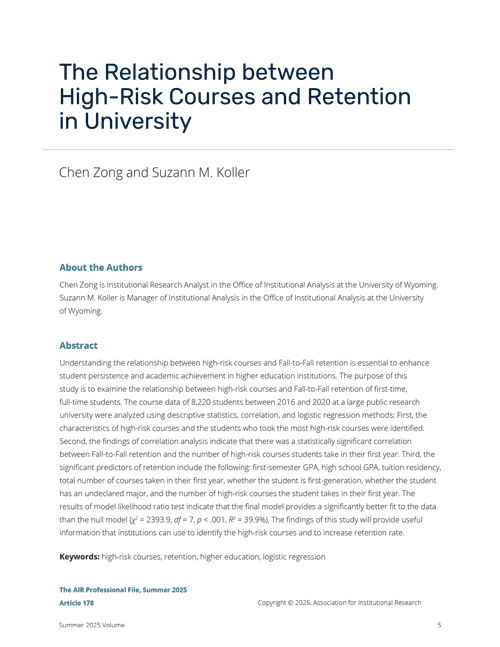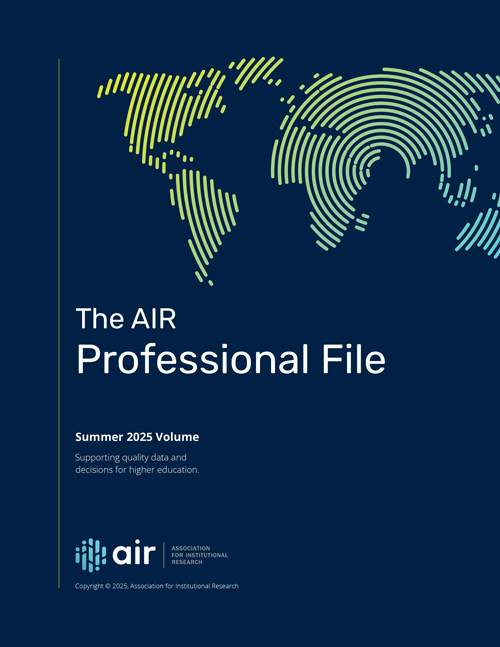The AIR Professional File
Summer 2025, Article 178
The Relationship between High-Risk Courses and Retention in University
https://doi.org/10.34315/apf1782025Abstract
Understanding the relationship between high-risk courses and Fall-to-Fall retention is essential to enhance student persistence and academic achievement in higher education institutions. The purpose of this study is to examine the relationship between high-risk courses and Fall-to-Fall retention of first-time, full-time students. The course data of 8,220 students between 2016 and 2020 at a large public research university were analyzed using descriptive statistics, correlation, and logistic regression methods: First, the characteristics of high-risk courses and the students who took the most high-risk courses were identified. Second, the findings of correlation analysis indicate that there was a statistically significant correlation between Fall-to-Fall retention and the number of high-risk courses students take in their first year. Third, the significant predictors of retention include the following: first-semester GPA, high school GPA, tuition residency, total number of courses taken in their first year, whether the student is first-generation, whether the student has an undeclared major, and the number of high-risk courses the student takes in their first year. The results of model likelihood ratio test indicate that the final model provides a significantly better fit to the data than the null model (χ2 = 2393.9, df = 7, p < .001, R2 = 39.9%). The findings of this study will provide useful information that institutions can use to identify the high-risk courses and to increase retention rate.
Keywords: high-risk courses, retention, higher education, logistic regression
Authors:
- Chen Zong
- Suzann M. Koller
Copyright © Association for Institutional Research 2025


